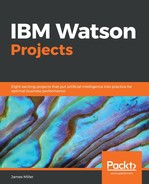Patient dialoguing can help the healthcare treatment process evolve from a caregiver listing a patient's symptoms and then applying appropriate treatments, to a healthcare professional identifying risks and making predictive recommendations.
Although you may have read that genomics (that is, the examination of DNA) is set to play a key role in the shift toward better health and the prevention of illness, we will consider the collection and analysis of patient dialog information as playing an integral part of this evolutionary shift.
u data consist of statements that are made between patients and healthcare providers, including naturally occurring narratives that are shared by patients with their physicians at key decision points along the patient's journey. Some of these narratives include what is known as an illness narrative from an exam-room interchange, in-home ethnography, and follow-up interviews and questionnaires. Make no mistake, there is value in the way that patients speak and feel about their illnesses and interact with your treatments.
Dialog data characteristics include the following:
- What are the symptoms that are reported by the patients?
- How long is the average physician–patient conversation?
- How is the conversational time split up between patients, physicians, and caregivers?
- What are the top questions asked by patients?
- What are the top questions asked by physicians?
- What are the conversation initiation frequencies?
- What are the dialog capture mechanisms used?
- How much of the dialog is format-based and how much is free form or free flowing?
